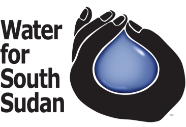The Impact: Water Storage and Distribution Systems
How Our Water Storage and Distribution Systems Transform Communities
Innovation and sustainability are key to lasting change in rural regions where water access is a daily struggle. That’s why Water for South Sudan (WFSS) began constructing solar-powered water storage and distribution systems in 2021—a powerful upgrade from traditional hand pumps that brings clean water closer to home for thousands.
What Is a Water Storage and Distribution System?
Our team starts by drilling a deep water well like our handpumped wells. But instead of relying on manual labor to pump water, we install high-efficiency, solar-powered pumps (like the durable Grundfos models) that do the heavy lifting. These pumps push water into an elevated tower, typically 10 meters (33 feet) high, where it’s stored in a large tank. As water rises to the top, a float switch stops the pump when the tanks are full (like the float switch in a toilet tank), conserving energy and protecting the system.
The tower's height creates natural water pressure, enabling distribution through pipes to water taps as far as one kilometer (6/10 of a mile) away. When a community member arrives at a water tap, it’s as simple as turning on a faucet and filling a jerrycan. No long lines. No hand-pumping. Just clean water, made easily accessible.
And when the sun doesn’t shine? A backup generator ensures water is always flowing, no matter the weather.
Why It Matters
Compared to a manual hand pump, one solar-powered water system can serve up to 2,000 people, four to five times more than a traditional well. Multiple taps across a wider area reduce wait times, reduce the burden on women and children who typically walk miles each day for water, and support better hygiene and health across entire communities.
It’s not just about access—it’s about dignity, opportunity, and time regained for education, work, and family. This system is a game-changer.
Building Sustainability from the Ground Up
WFSS doesn’t stop at installation. Each water system includes a sturdy structure with sleeping quarters and a small office for water guards—trusted community members who monitor water access and maintain the system.
Here’s how the model works:
Monthly Subscriptions: Families pay a small monthly fee to access the water, creating a locally managed fund.
Secure Funds: The collected money is stored in a triple-padlocked box, with three separate community members holding the keys for added transparency.
Microfinance and Maintenance: The fund supports ongoing costs like generator fuel, pump servicing, and guard salaries. It also provides microloans to community members, which are repaid to strengthen the cycle.
And while most tanks are currently plastic, we’re transitioning to longer-lasting metal options to ensure sustainability for decades to come.
Together, we are uniting to water the seeds of change in South Sudan. Thank you for supporting this invaluable work.




